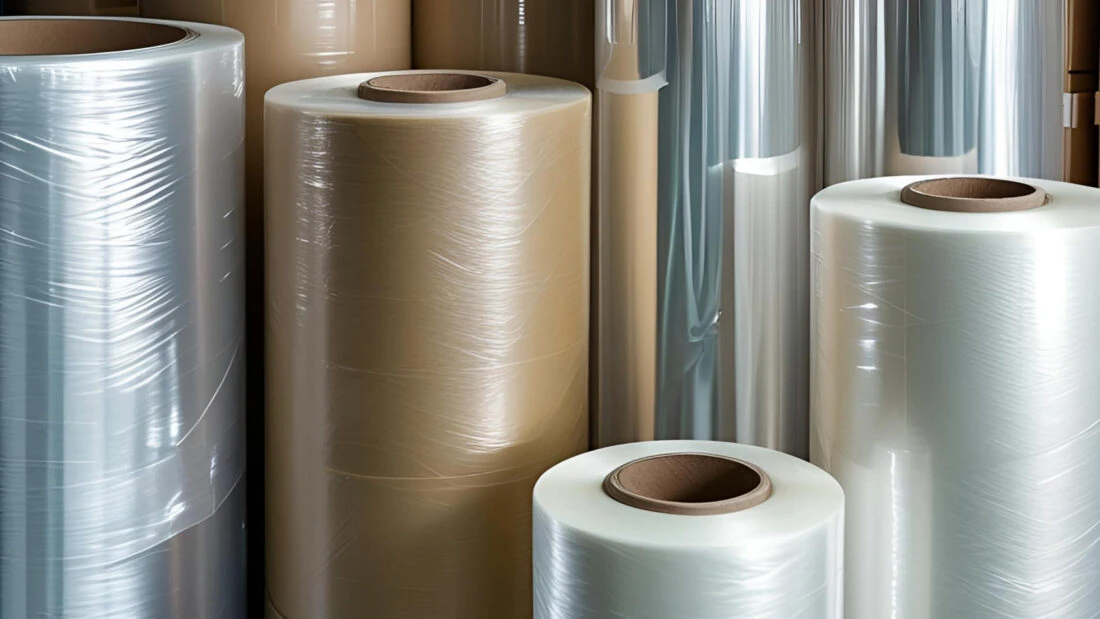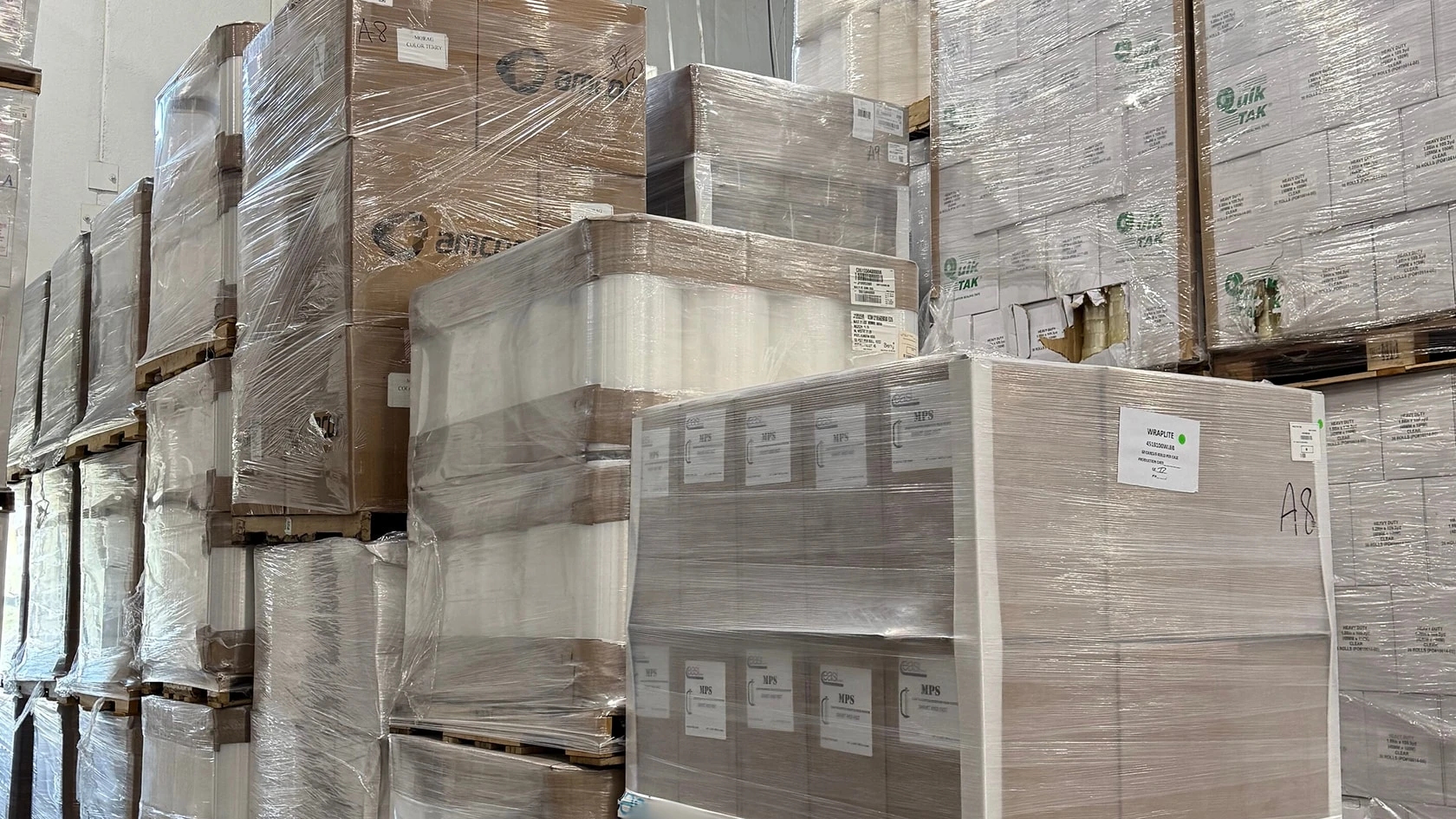The browser you are using is not supported. Please consider using a modern browser.
Choosing the Right Stretch Film for Your Packaging Needs

Selecting the appropriate packaging materials directly impacts your operational efficiency and bottom line. As a distributor with over 40 years of experience, we’ve seen firsthand how stretch film stands out as an essential component for securing and protecting products.
The guide will help you choose the right stretch film solutions for your needs.
Understanding Stretch Film Fundamentals
Stretch film (also called stretch wrap or pallet wrap) is a versatile packaging material that reliably secures and bundles your products. It is an elastic plastic film that creates a tight seal around items, providing the stability and protection you need from external elements such as dust, moisture, and handling damage. When applied correctly, it’s like giving your products a protective shield for their journey.
Cast vs. Blown: Stretch Film Types
When evaluating stretch film solutions, you’ll encounter two main manufacturing processes that create distinctly different products:
Cast Stretch Film
- Produced through a continuous casting process
- Features exceptional clarity and a smooth, quiet unwinding
- Offers consistent thickness throughout
- Ideal for uniform loads requiring efficient application
Generally more cost-effective for standard applications
Real-world application: A furniture distributor shipping uniform boxes of assembled chairs found that cast stretch film provided the perfect balance of load stability and cost efficiency, while the clarity allowed for easy product identification through the wrap.
Blown Stretch Film
- Manufactured using a blown extrusion process
- Provides superior puncture resistance and toughness
- Delivers excellent resilience for challenging applications
- Preferred for irregularly shaped or heavier loads
- Offers superior load retention when durability is paramount
Real-world application: A building materials supplier shipping pallets with mixed products of varying shapes found that blown stretch film prevented tears and punctures even when corners and edges threatened to break through lesser films.
Matching Stretch Film Types to Your Specific Needs
Different packaging scenarios call for specific stretch film solutions:
Hand Stretch Film is perfect for smaller operations or occasional wrapping needs. Available in various thicknesses, this film type accommodates different load sizes while offering manual control over application tension. Example: A small electronics refurbisher who ships 5-10 pallets daily found hand stretch film with ergonomic handles allowed their team to secure loads effectively without investing in automated equipment.
Machine Stretch Film powers high-volume packaging operations. Engineered for compatibility with automated wrapping equipment, this option dramatically improves consistency and efficiency in busy distribution environments. Example: A food distribution center processing 200+ pallets daily switched to machine-grade stretch film with their semi-automatic wrapper, reducing film usage while improving load stability.
Bundling Stretch Film offers a cost-effective way to secure multiple items together without the additional time required for strapping or taping. Example: A sportswear distributor bundles multiple boxes of the same SKU together using narrow-width bundling film, reducing the handling of units and speeding up their picking process.
Specialized Stretch Films address unique requirements, such as UVI stretch film that protects against ultraviolet damage during outdoor storage. Example: A garden supply company shipping seasonal products that might sit in outdoor distribution centers for weeks uses UVI-resistant stretch film to ensure their products remain protected regardless of sun exposure.
Key Benefits of Quality Stretch Film
Implementing the right stretch film strategy delivers multiple advantages:
- Enhanced Load Stability during transportation, minimizing shifting and potential damage—just like a seatbelt for your products
- Comprehensive Product Protection from environmental factors, ensuring what leaves your facility arrives exactly as intended
- Improved Cost Efficiency through reduced product damage and optimized material usage, helping your bottom line
- Increased Labor Productivity with streamlined packaging processes that get more products out the door faster
Choosing the Right Stretch Film
To determine the optimal stretch film for your needs, consider these critical factors:
- Load Characteristics: Evaluate the weight, size, and shape of typical loads
- Application Method: Determine whether manual or machine application better suits your operation
- Environmental Conditions: Consider storage and transport environments that may require specialized film properties
- Cost Considerations: Balance initial material costs against potential savings from reduced damage and improved efficiency
By thoughtfully assessing these factors, you can identify the stretch film solutions that best align with your operational needs, ensuring optimal product protection while maximizing efficiency and cost-effectiveness.
At Preferred Plastics & Packaging, we’ve been helping distributors solve packaging challenges since 1983. With eight warehouse locations across five states and millions in inventory always on hand, we’re ready to help you find the right stretch film solution—on time, handled with care, and delivered safely.
